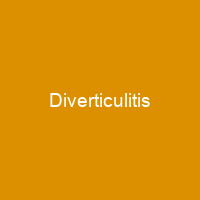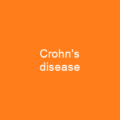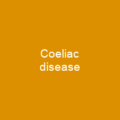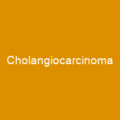Diverticulitis is a gastrointestinal disease characterized by inflammation of abnormal pouches. Symptoms typically include lower abdominal pain of sudden onset. Risk factors may include obesity, lack of exercise, smoking, a family history of the disease, and use of nonsteroidal anti-inflammatory drugs. Costs associated with diverticular disease were around US USD 2. 4 billion a year in the United States in 2013.
About Diverticulitis in brief

The condition is postulated to develop because of abnormally vigorous contractions, including high pressures inside the colon because of high pressures in the blood vessels. The symptoms include fever, nausea, diarrhea or constipation, and blood in the stool. Repeated attacks may occur, and the disease becomes more frequent with age, being particularly common in those over the age of 50. In some cases, the affected part of. the colon adheres to the bladder or other organs in the pelvic cavity, causing a fistula, or creating an abnormal connection between an organ and adjacent structure or other organ. In complicated diverticulo, an inflamed diverticulum can rupture, allowing bacteria to subsequently infect externally from the colon,. If the infection spreads to the lining of the abdominal cavity, peritonitis results. Complications such as abscess formation, fistula formation, and perforation of the. colon may require surgery. For severe cases, intravenous antibiotics, hospital admission, and complete bowel rest may be recommended. Probiotics are of unclear value. It is unclear what role dietary fiber plays in diverticule.
You want to know more about Diverticulitis?
This page is based on the article Diverticulitis published in Wikipedia (as of Dec. 19, 2020) and was automatically summarized using artificial intelligence.







